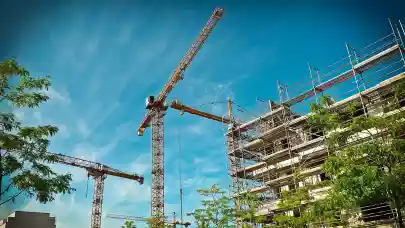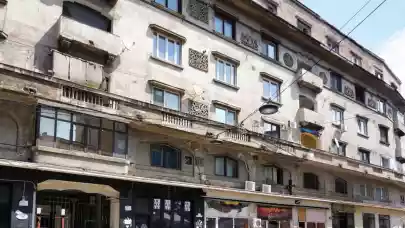
Decarbonization of the construction sector plays a crucial role in achieving climate goals, as the real estate market is responsible for 38% of global CO2 emissions, according to UN data. In the case of new buildings, especially industrial ones, eco-friendly solutions have become the new standard. In fact, it’s often required by investors, says Marcin Kosieniak, MEP design specialist and co-owner of the PM Projekt construction design office, and expert of the RRJ Group.
The International Energy Agency (IEA) estimates that achieving net-zero carbon dioxide emissions from buildings by 2050 will only be possible if direct CO2 emissions from buildings are reduced by half by the end of this decade.
Data shows that buildings also consume about 50% of all extracted raw materials and are responsible for 33% of water consumption, and 35% of waste generation.
Ecology drives changes in the construction sector
Legal regulations, including EU directives obliging companies to achieve sustainable development goals, have forced changes that are most visible in the industrial real estate market.
"Reducing CO2 emissions and other environmentally friendly solutions are undoubtedly the base of modern design. In fact, architectural plans are often checked by the installation designer to ensure the building will be eco-friendly. He calculates not only the future CO2 emissions but also the energy consumption and how it might be recovered for reuse. In the case of new investments, especially in the industrial market, eco-friendly solutions that save both energy and water are often required by investors. Why? Because ecological certifications significantly increase future rent and sale prices", notes Marcin Kosieniak, MEP design specialist and co-owner of the PM Projekt construction design office.
In the case of other types of buildings - industrial plants, public utility facilities, or residential buildings - energy-efficient and water-saving solutions are becoming increasingly popular.
"It’s crucial to remember, that an experienced installation designer can precisely check and calculate almost all of the possible eco-friendly building solutions. It’s not just about using solar panels but also heat recovery. The reuse of waste heat is becoming more and more common. You can, for example, reuse heat from server rooms or cooling aggregators to heat machine halls or other parts of the building. In production facilities, after carefully analysing the building, we can recover and reuse energy to lower heat consumption by up to 20-30%", says Kosieniak.
"By looking at the architectural design, we can also make detailed calculations regarding heat gains from various types of glazing. That means we can precisely indicate which material is going to have the most energy-efficient solar reflection coefficient. In several of our projects, we have effectively used cool air from the ground, to passively cool down the building’", he adds.
What other eco-friendly solutions are used in modern building design today?
"In addition to energy recovery, there’s also water recovery methods and energy-efficient, remotely controlled faucets (especially in public buildings). Buildings can also reuse rainwater, a.k.a. "gray water” - large facilities usually have their own water tanks to store it. Dust removal systems with filtered air recovery are also highly effective, especially in production plants in industries such as welding or carpentry", says Marcin Kosieniak, MEP design specialist.
"Precise calculations, experienced installation designers, and collaboration with architects all play a key role in designing these eco-friendly systems. Reducing CO2 emissions in the construction process is also key. By aggregating data from different projects, we can precisely plan the work of individual people: calculate the time needed to complete the entire project, the number of workers, time spent on project management, and so on. It all contributes to a reduction of CO2 emissions in the construction process. Moreover, it gives designers the ability to clearly show how the client’s money is being spent", summarizes Marcin Kosieniak, designer and co-owner of PM Projekt construction design studio.



